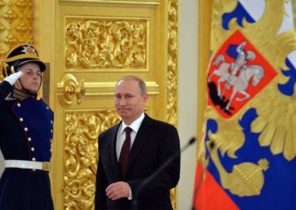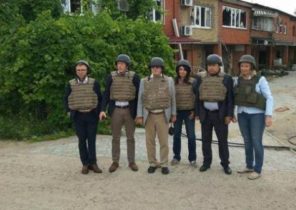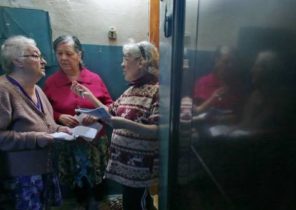
Over the past twenty years, millions of migrant workers from Central Asia became a part of life in major Russian cities. But Moscow still looks to the citizens of neighbouring States with the position of a colonial ruler, according to experts. Perfect Monday in St. Petersburg act of terror, traces of which are in Central Asia, drew attention to this neglected problem.
All as a blueprint with only a time gap of several decades. The Soviet Union was heir to the Russian Empire, which differed from the European colonial empires that her colonies were not overseas in other continents — in the 19th century Russia had annexed to his partner.
Even after the collapse of the Soviet Union Central Asia has an ancient culture of large state formations, broke ties with Russia only partially. “Moscow still looks to the Central Asian Republic from the point of view of the former colonial ruler,” says václav Lidl, an analyst from the Association for international Affairs.
Over the last 15 years in Russia as in Western Europe, came in search of work millions of migrants from the “former colonies”. After all, in comparison with Central Asia, Russia was a rich prosperous country.
“Russia has a large number of men from some of the poorest countries in Central Asia,” said Ian Shire, a specialist on the former Soviet Union of Charles University. Many migrant workers without work receive Russian citizenship. For example, Kyrgyzstan, where are the likely perpetrators of terrorist acts in St. Petersburg, failed to agree on a simplified regime for their citizens.
However, hundreds of thousands and millions of people from Central Asia living in Russia illegally, and no one knows exactly how many there are. The border of Russia with Central Asia in fact, not protected, and if by chance an illegal immigrant was detained by the police, the problem is solved with a bribe.
Workers at the construction site and cook
But it is from Muslim migrant workers (according to official data at the end of last year, there were about seven or eight million) some sectors of the Russian economy so dependent that they no migrants simply not enough.
“Tajik in Russia today is synonymous with cheap and usually illegally employed the worker at the construction site. In the 90 years in the Czech Republic so it was with the Ukrainians,” — says the analyst václav Lidl. “Helpers in the kitchen, drivers of trucks and taxis — all of them in modern Moscow or Saint Petersburg from Central Asia,” adds Ian wide.
Russian journalist Elizaveta Osetinskaya, who now works at Stanford University in the United States, compares the position of Central Asia to Russia to Mexico to the United States. “Millions of migrants from Central Asia, legal and illegal, are in Russia, all the types of discrimination faced hatred and abuse,” — says the Ossetian.
But, according to Shira, the comparison with Christians from Mexico largely unjustified, including from the Islamic faith of migrants. She complicates things. On the one hand, in the 90-ies in Central Asia there was territory controlled by radical Islamists. On the other hand, many immigrants from Central Asia not too devout. “I was recently in Uzbekistan, and there in the order of things, when a Muslim male drink vodka. A first stack with us drunk and his wife” — gives an example from the life of václav Lidl.







